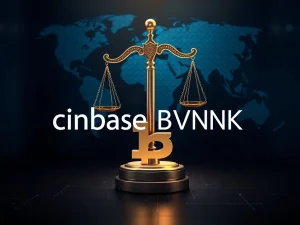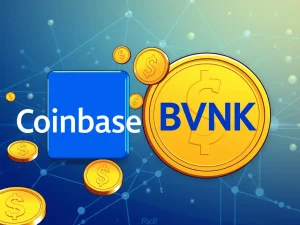Web3 Gaming’s Unfulfilled Promise: Can Onchain Games Revolutionize the Crumbling Gaming Industry?

The gaming world is facing a seismic shift. While major players in the traditional gaming industry are experiencing unprecedented challenges, marked by layoffs and studio closures, the much-hyped revolution of Web3 gaming seems to be stuck in neutral. Billions have been poured into this space, promising a new era of player empowerment and developer freedom, yet mainstream adoption remains a distant dream. Why is it that despite the buzz and investment, onchain gaming is struggling to deliver on its grand promises?
The Crumbling Giants: Why Traditional Gaming is in Trouble
Let’s face it, the golden age of gaming euphoria fueled by pandemic lockdowns is over. The gaming industry is grappling with a harsh reality in 2024. Even established studios are not immune to the wave of layoffs and closures. What’s behind this downturn?
- Unsustainable Development Costs: Creating AAA titles has become incredibly expensive, often exceeding $100 million per game. This financial pressure makes the industry vulnerable.
- Innovation Crisis: For decades, the focus has been on graphical improvements rather than genuinely innovative gameplay. This reliance on better graphics, as highlighted by a New York Times article, has proven to be a risky bet.
- Control and Distribution Issues: Indie developers find it increasingly difficult to compete with large publishers who control funding and distribution channels, creating walled gardens that stifle creativity and competition.
Enter Web3 gaming, initially hailed as a potential savior. Blockchain technology promised to disrupt this status quo by offering indie studios new funding avenues and greater control over distribution. But has it lived up to the hype?
The Unfulfilled Promise of Onchain Gaming: Recreating Old Problems?
Blockchain gaming, specifically onchain gaming, emerged as a beacon of hope, promising to decentralize power and reward both developers and players. However, the reality has been far from revolutionary. Instead of solving the core issues of the gaming industry, Web3 gaming appears to be recreating some of the very problems it aimed to fix. How did this happen?
The Tech Mismatch: Blockchains Not Built for Games
The fundamental issue lies in the technology itself. Early blockchains like Ethereum and Solana were designed for financial transactions, not the complex demands of real-time gaming. This mismatch presented game development studios with a difficult choice:
- Compromise Gameplay: Build on existing blockchains and sacrifice player experience due to limitations in transaction speed and scalability.
- Isolate Ecosystems: Create custom blockchains, leading to fragmented ecosystems, reduced network effects, and walled gardens, ironically mirroring the problems of traditional gaming.
Many developers opted for the latter, prioritizing control over connectivity. This resulted in isolated platforms, limiting player bases and hindering the potential for true cross-game interoperability that blockchain gaming initially promised.
Focus on Tokenomics Over Fun: A Misalignment with Gamers
Another critical flaw in the Web3 gaming narrative is the overemphasis on tokenomics at the expense of engaging gameplay. While crypto-native players might be attracted to play-to-earn mechanics and token rewards, mainstream gamers are driven by fun and immersive experiences.
Consider these points:
- Chasing Crypto Users, Not Gamers: Many Web3 gaming projects focus on attracting existing crypto users rather than expanding the gaming market to mainstream audiences. This creates a closed loop, where games compete for the same limited pool of crypto-natives.
- Gameplay as an Afterthought: Too often, Web3 games are designed around tokenomics and blockchain technology first, with gameplay considered secondary. This is a recipe for failure in attracting and retaining mainstream gamers.
- The DappRadar Report Reality Check: A recent DappRadar report highlights this issue. While Web3 gaming boasts millions of unique active wallets, anecdotal evidence suggests that the actual gaming cohort interested in gameplay, not just earning, is significantly smaller – perhaps only tens of thousands.
Mainstream gamers are not inherently opposed to onchain gaming. What they desire is meaningful ownership of in-game assets combined with the engaging gameplay they’ve come to expect from decades of gaming on consoles, PCs, and mobile devices. Web3 gaming needs to tap into this existing gaming culture and build upon it, rather than trying to reinvent the wheel with complex and often un-fun token economies.
Can Game Development Recapture the Fun in Web3?
Despite the current challenges, Web3 gaming still has a chance to fulfill its initial promise. The struggles of major studios in the traditional gaming industry underscore the need for new models and approaches. But to succeed, onchain gaming needs a fundamental shift in focus.
Key Steps to Revitalize Web3 Gaming:
- Prioritize Fun and Engaging Gameplay: This is paramount. Web3 games must be enjoyable to play, regardless of blockchain integration. Tokenomics should enhance the experience, not define it.
- Build Gaming-Specific Infrastructure: The industry needs blockchain solutions specifically designed for the demands of gaming, offering both developer control and cross-ecosystem interoperability. This means addressing issues like transaction speed, scalability, and user experience tailored for games.
- Focus on Creator Empowerment and Collaboration: Web3 gaming should truly empower developers by providing them with economic freedom and fostering collaboration, not creating new walled gardens. Revenue models should reward collaboration and innovation.
- Simplify Crypto Complexity: Game studios hesitate to enter Web3 due to its technical complexity. Making it easier to build and integrate blockchain elements without requiring deep crypto expertise is crucial for broader adoption.
Conclusion: Making Games Fun Again – The Future of Gaming
The future of gaming is not about chasing better graphics or dangling token incentives. It’s about fostering an environment where creativity and collaboration can flourish. Web3 gaming has the potential to revolutionize the gaming industry, but only if it returns to the fundamental principle of making games fun to play. When developers are empowered to focus on creating engaging experiences, and players are given true ownership and control, everyone benefits. The path forward is clear: let’s make games fun again and unlock the true potential of onchain gaming.
Opinion by: Daryl Xu, co-founder and CEO, NPC Labs. This article is for general information purposes and is not intended to be and should not be taken as legal or investment advice. The views, thoughts, and opinions expressed here are the author’s alone and do not necessarily reflect or represent the views and opinions of Crypto News Insights.







